Israel's War on Iran Backfired — But the Story Isn't Over
The failed 12-day war, Netanyahu's desperation, the renewed Abraham Accords, and the narrative war reshaping the region.
Israel's surprise attack on Iran was meant to collapse the Islamic Republic and reshape the region. Instead, it exposed Israeli vulnerabilities, failed to achieve its objectives, and ended in a hastily arranged ceasefire.
But this isn't a story about military failure—it's about how that failure gets spun into diplomatic triumph. Trump's renewed Abraham Accords represent imperial domination marketed as peace, designed to subjugate Palestinians and fracture Arab unity.
Israel's Failed Strategy
It wasn't supposed to happen this way. It was supposed to be quick.
On June 13, Israel launched a surprise attack on Iran, with full military and political backing from the United States. The official justification was Iran's nuclear program—despite a lack of credible evidence that it posed any immediate threat or was being weaponized. The real objective was to collapse the Islamic Republic, fracture its leadership, and trigger regime change.
The opening Israeli strikes against Iranian military and nuclear targets were officially carried out under the codename Operation Rising Lion. The name was chosen for its layered symbolism. It references the Hebrew Bible (Old Testament), Numbers 23:24: "Behold, the people shall rise up as a great lion…"—a verse circulated by Israeli officials in the lead-up to the assault.
Netanyahu even placed a note inscribed with the verse at Al-Buraq Wall, which colonial narratives call the "Western Wall" or "Wailing Wall," framing the operation as divinely sanctioned.
The name also invoked Iran's own imperial imagery. Before the 1979 revolution, Iran's national emblem featured a lion and rising sun—the symbol of the Shah. By naming the operation Rising Lion, Israel was not just signaling military strength; it was also exploiting Iran's internal tensions—appealing to monarchist nostalgia and subtly casting the strike as a blow not just against the Islamic Republic, but in alignment with a different vision of Iranian identity.
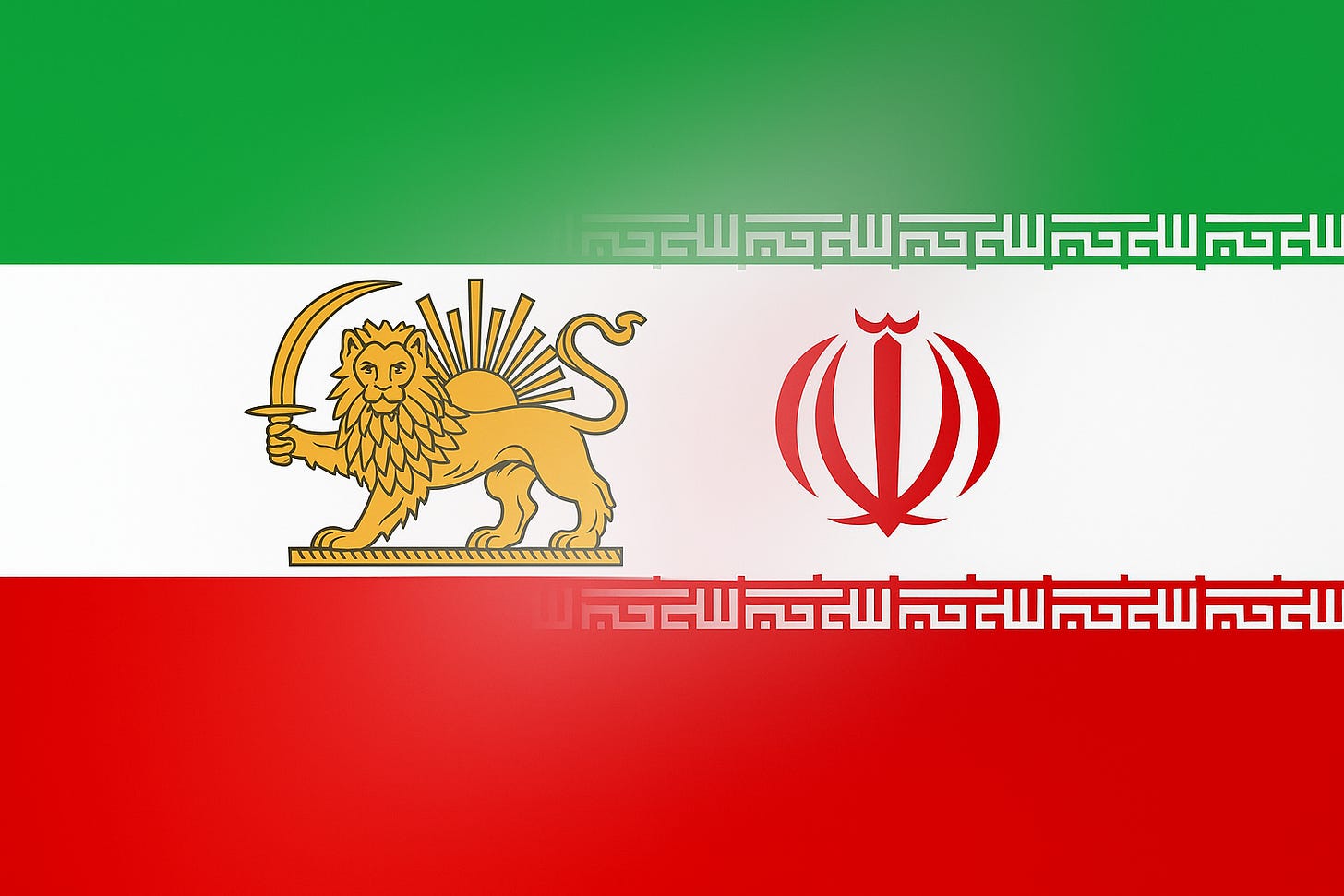
The irony, of course, is that the Shah's regime was itself oppressive and undemocratic—installed through a U.S.-led coup in 1953 against the democratically elected Mohammad Mossadegh, whose crime was seeking to nationalize Iran's oil production.
Israeli and American planners seem to have believed that by decapitating Iran's military command and hitting key infrastructure, they could provoke unrest, weaken state cohesion, and unravel the government from within.
But Operation Rising Lion failed. The symbolism was bold. The targeting was precise. But the strategy unraveled. The Islamic Republic did not fall. The nuclear program survived. And despite temporary air superiority, Israel could not deliver regime change. The lion rose, roared—and recoiled.
Even with deep internal tensions, Iranians rallied around the flag in the face of external attack. The distinction between opposing those in power and defending the nation remained clear: when foreign forces strike, even government critics close ranks.
Beneath that unity, however, lies a fractured society—divided along ethnic, political, and generational lines. Over 60% of the population is under 35, many of whom are disillusioned by limited freedoms, a collapsing currency, chronic inflation, and high youth unemployment. The visible wealth of elites—especially those tied to the IRGC—intensifies public resentment.
But none of this internal discontent translated into collapse. On the contrary, the Israeli assault unified the population, at least temporarily—and Iran hit back.
Israel suffered notable retaliation. Though largely downplayed in U.S. media, Iranian ballistic missile strikes caused significant damage in Israel, particularly in Tel Aviv and Haifa—and placed mounting domestic and infrastructural strain. Trump himself acknowledged this, saying Israel was hit "very hard."
In the days that followed, the U.S. launched Operation Midnight Hammer, deploying B‑2 strategic bombers—aircraft originally built to penetrate deep Soviet defenses. According to Pentagon briefings, the planes took off from Whiteman Air Force Base in Missouri, flew nearly 18 hours across continents, and dropped 14 GBU‑57 bunker-busters on the Fordow and Natanz facilities. Simultaneously, a U.S. Navy submarine in the Arabian Sea fired over two dozen Tomahawk cruise missiles at Isfahan. The bombers then refueled midair and flew back.
Aircraft carriers and aerial refueling tankers were positioned throughout the Arab region. The message from Washington was calibrated: demonstrate overwhelming capability, reassure allies, and avoid a ground war. But beneath that calibration was a threat. The strike was a preview—an unmistakable signal of what could come next. A show of force meant to compel capitulation without full-scale escalation.
The next day, Iran responded—not by escalating, but by signaling. It targeted the U.S. Al Udeid Air Base in Qatar, the largest American military installation in the region. But the strike came only after advance warnings were issued to both Qatari and American officials. Aircraft were evacuated. Airspace was cleared. No casualties occurred.
Iran could have struck U.S. naval assets in the Gulf or the Indian Ocean, but doing so would have triggered direct escalation. The message was measured: project power, but avoid war.
Iran wanted to de-escalate by showing it could expand the conflict—to disrupt oil flows through the Strait of Hormuz and destabilize the Gulf region—without crossing a red line. As with its response to Qassem Soleimani's assassination, it retaliated for optics, not escalation.
Iran’s choice of Qatar was no accident. Of all the Gulf states, Doha had the best chance of repairing ties with Tehran. Iran had supported Qatar during the Gulf blockade from 2017 to 2021, and that goodwill still matters. By striking Al Udeid, Iran demonstrated reach, without jeopardizing a relationship it could afford to salvage.
In the end, Israel couldn't afford a war it couldn't finish—and the U.S. seemed unwilling to stake its global standing on a fight it couldn't control.
The Ceasefire Calculations
American Calculations
From the American perspective, the pieces landed exactly where they were meant to. Trump is reaping the rewards of what he calls “negotiating through force.” He responded to Iran’s hardline stance in nuclear negotiations first by greenlighting Israel’s assault—then by stepping in directly.
He sees himself as setting a new rule for the region: if a side refuses to play ball, he'll pressure them through military force, then offer a ceasefire on his own terms. Trump claimed that both Israel and Iran asked him to broker the ceasefire. In practice, the U.S. remains firmly aligned with Israel—while keeping the door open for Iran to capitulate, either now or under renewed American pressure later.
Israeli Calculations
From Israel’s perspective, the war had become untenable. Iranian missiles overwhelmed air defenses and struck deep into occupied Palestine, causing escalating physical, economic, and psychological damage. The state’s foundational promise—that it could protect its citizens while waging wars across multiple fronts—was no longer credible.
This revealed the fantasy Israeli society had been conditioned to believe: that war happened elsewhere, that the Iron Dome and American defenses would keep conflict at the borders. War was something to watch on television, not something to survive in bomb shelters.
The reality exposed Israel’s underlying vulnerabilities. As a settler population drawn from dozens of countries, many citizens still carry second passports—a population with options. The state’s cohesion depends on security, and its survival depends on perceived invincibility. In a prolonged crisis, emigration becomes a real possibility.
The financial cost was staggering. Losses are estimated between $11.5 billion and $17.8 billion, representing 2.1–3.3% of Israel’s $540 billion GDP. These figures include military expenditures, infrastructure damage, and the cost of intercepting Iranian missiles.
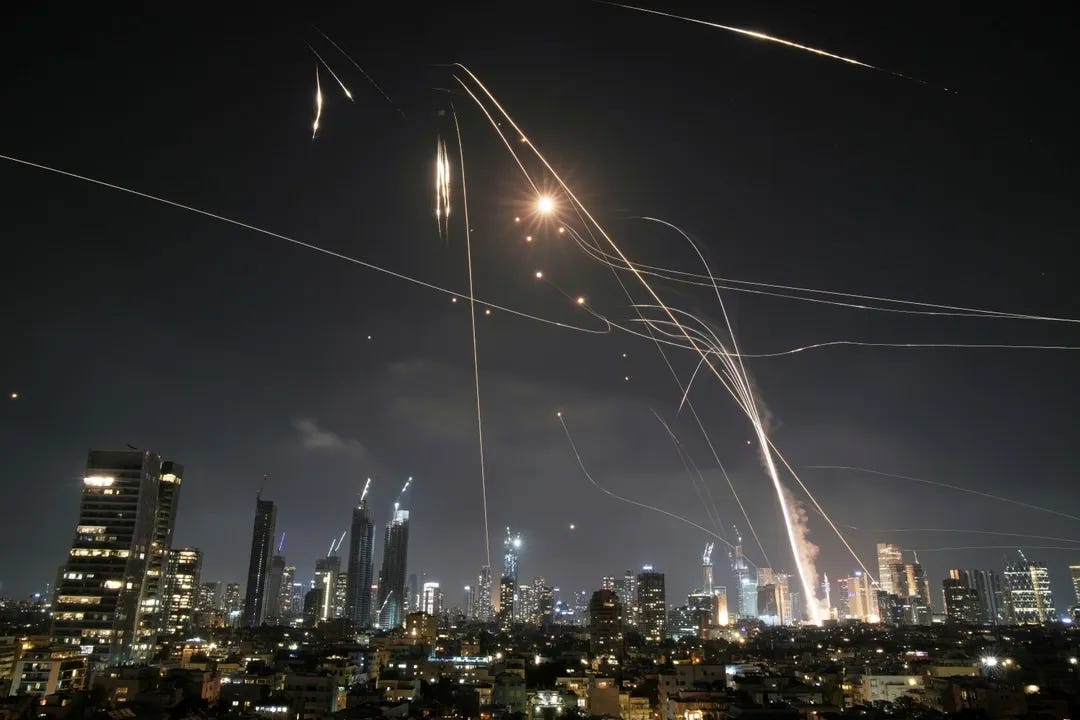
Israel’s high-tech sector—responsible for 64% of exports and a fifth of its GDP—suffered workforce shortages as thousands of reservists were pulled from critical roles. Business closures, suspended flights, and labor gaps in agriculture and construction compounded the strain.
Israel entered the war with three primary goals: destroy Iran's nuclear program, cripple its ballistic missile capabilities, and collapse the Islamic Republic. None were achieved.
Iran's nuclear infrastructure at Natanz, Fordow, and Isfahan may have been damaged—but not eliminated. Recent evidence suggests the damage was far less significant than claimed. Despite Israeli and American declarations of success, the program remains intact.
To make matters worse, Iran has now legally terminated all cooperation with the IAEA. UN surveillance cameras have been removed from all nuclear facilities.
Reports also indicate that Iran still possesses over 400 kilograms of uranium enriched to 60% purity. While below weapons-grade, that stockpile—if further enriched—could potentially yield 8 to 10 nuclear warheads within weeks.
Iran's missile forces also remained functional. Even in the final hours of the war, Iranian rockets continued to hit Israeli targets. As for regime change, it never materialized.
Without full U.S. involvement, the war risked turning into a grinding, protracted conflict. Despite the effectiveness of Israel's initial surprise assault and high-level decapitation strikes, it wasn't enough to bring down the government.
But Netanyahu did succeed in one regard: avoiding a war of attrition. He knew how deeply it terrifies Israelis—and how surely it would destroy him.
Iranian Calculations
What ultimately made the war unsustainable from Iran’s perspective was Israel’s ability to establish air superiority and secure operational freedom for its air force.
On the surface, Iran’s response may have looked coordinated: swift replacement of commanders, sustained missile barrages, and carefully selected targets. But beneath that show of resolve was a state under immense internal strain. The war exposed vulnerabilities Iran had long managed to suppress—many now too visible to ignore.
In the first hours of the war, Iran lost several top military leaders, including the Chief of the General Staff, the Commander-in-Chief of the IRGC, the Commander of the IRGC Aerospace Force, and the head of its air defense division. The newly appointed head of the Khatam-Al-Anbiya Central Headquarters—a wartime command structure equivalent to a joint chiefs office—was also killed, along with his replacement just four days later.
In the days that followed, additional senior commanders were targeted and killed, including the Deputy Head of IRGC Intelligence, the Deputy Head of IRGC Strategic Operations, and other senior intelligence officials.
Just as alarming was the extent of internal infiltration exposed during the war. Authorities reported dismantling dozens of drone-launching cells and sabotage networks. Operatives and weapons were found across multiple provinces, and truckloads of smuggled UAVs were intercepted near major cities. Surveillance and communications systems were also found to be compromised. The surprise attack revealed not only external threats, but serious internal security vulnerabilities.
Regionally, the balance had shifted decisively against Iran over the past year—Lebanon, Syria, Iraq were no longer in its favor. Iran's original deterrence doctrine was based on forward defense—anchored by its regional allies. Hizb-Allah was the core of that defense. Iran entered this war in the worst possible condition: without the tools it had spent years building for such a confrontation.
A major IRGC Quds Force official—head of its Palestine Corps overseeing support for Hizb-Allah and Palestinian factions—was assassinated just days before the war ended. Known as Haj Ramadan, his real name was Mohammad Saeed Izadi.
His killing capped a systematic campaign against Iran's regional command. It began with Razi Mousavi, the Quds Force's logistics chief in Syria, killed in December 2023; followed by Brig. Gen. Mohammad Reza Zahedi, Quds commander for Syria and Lebanon, killed in the April 2024 strike on Iran's consulate in Damascus. The final blow came in June 2025, when Izadi was killed in Qom, dismantling the top tier of Iranian coordination for regional resistance.
Iran knew it had to stop the war and rebuild its fractured internal security system. With its defenses so thoroughly exposed, the American threat felt very real. That urgency is what pushed Iran to accept the ceasefire quickly.
Iranian airspace was dangerously vulnerable. Although government-affiliated media circulated unverifiable claims—such as bringing down F‑35s and capturing enemy pilots—no formal state statements confirmed these incidents, and there is no evidence they occurred or that Iran possesses such capabilities.
Despite managing to hit Israeli defense installations and sensitive infrastructure, Iran lost far more than it inflicted. Had the war continued, it risked becoming another Iraq scenario—facing the full weight of U.S. power and, like Saddam, losing everything in the end.
The Fragile Result
After the ceasefire, public celebrations broke out across Iran. Despite the casualties and damage, many saw it as a victory: the government had survived an Israeli-American attempt to bring it down, and they had applied enough pressure to force a halt in the fighting.
But it was only a ceasefire—no formal agreement, no conditions, no guarantees. The only official acknowledgment came in the form of a Truth Social post by Trump. Iranian officials confirmed that nothing had been signed, and that the pause in hostilities was only conditional on Israel doing the same.
Observers from AP, Reuters, and others described the ceasefire as fragile and informal—not underpinned by any binding framework. Given the lack of formal terms and mutual distrust, most analysts view it as a temporary pause—not a durable peace.
But while Iran celebrated survival and Trump claimed victory, Netanyahu had his own reading of the moment.
Netanyahu’s Political Survival
Netanyahu has been lobbying for military confrontation with Iran since 1996. It has defined his career. He has spent decades warning of Iran's nuclear ambitions, presenting himself as the only leader capable of stopping them. But for Netanyahu, Iran is not just a defining achievement of his political career—it's a lifeline.
There's a darker calculation beneath the surface: peace would be Netanyahu's undoing.
Absent war, calls for accountability grow louder—under international law, through internal judicial scrutiny, and over his failure to prevent the October 7 operation. Ending the war would bring renewed pressure: a corruption trial repeatedly delayed, a stalled judicial overhaul, and a fracturing coalition.
As long as the war continues, Netanyahu remains insulated. Emergency powers remain in place. Headlines focus on national security. Legal proceedings stall. Political opposition splinters. What threatens him most is the prospect of peace.
It was precisely this desperation that drove him to unprecedented candor following the ceasefire. In a televised interview with Kan News (Israel's public broadcaster), Netanyahu said, "After the establishment of Israel, we faced a unified Arab world—and we gradually fragmented it. We succeeded in dividing the Arabs, who had been united when the State of Israel was founded."
This quote was widely circulated because it so openly articulated what is usually left unsaid: Israel's long-term strategy deliberately aims to weaken and divide neighboring states to prevent coordinated opposition. Israel functions as a strategic outpost for global power, enforcing a regional order that keeps Arab and Muslim states disunited, dependent, and dysfunctional.
Since its creation, Israel has pursued a strategy of regional dominance built on four pillars: an ironclad alliance with the United States, exclusive nuclear weapons possession, the most advanced conventional military in the region, and the fragmentation, destabilization, or co-optation of rival states through the existential dependence of their despots on American power.
This strategy takes different forms across the region. For compliant neighbors like Egypt and Jordan, the method is economic dependency—heavy reliance on U.S. aid with clear conditions against challenging Israel. For resistant states like Syria, Lebanon, Iraq, and Iran, the goal is destroying state coherence through sanctions, warfare, and civil conflict, then blaming their instability on governance failures.
The doctrine remains constant, but the methods evolve. Trump saw the Iran war's aftermath as an opportunity to shift from military fragmentation to diplomatic management. But Netanyahu's need for endless war collided directly with this evolution.
Netanyahu required perpetual conflict for political survival; Trump needed this war to end to launch a grander hegemonic project. Same imperial goals, incompatible timelines—creating an irreconcilable contradiction. For now, Trump's timeline prevailed.
Regional Pacification
After the ceasefire, Netanyahu didn't speak of reconciliation. He said the war "made Israel a great power." It wasn't a declaration of peace—it was a declaration of entitlement to maintain unchecked regional dominance.
Trump sees this moment differently. He has stated he wants to "start loading up" the Abraham Accords by bringing in more "moderate" Arab nations, even suggesting that Iran could have joined, while simultaneously calling Iran "the primary problem." His broader strategy emphasizes expanding the circle of Arab-Israeli normalization and erecting a stronger regional bulwark against Iran.
He has also floated dramatic proposals for Gaza—such as U.S. control and relocating Palestinians. The colonial logic becomes clear in his regional envoy's words: "Peace in the region means a better life for the Palestinians. A better life is not necessarily tied to the physical space that you are in today," Steve Witkoff told the Times of Israel—colonial speak for ethnic cleansing.
Reinforcing this vision, Witkoff said, "We think we're going to have some pretty big announcements on countries that are coming into the Abraham Peace Accords… maybe people would never have contemplated," underscoring the ambition to normalize the Israeli annexation of Palestine on a regional scale.
These aren't isolated policy proposals—they reveal the architecture of a new regional order.
What emerges is not a region at peace, but a pacified Arab region carved into zones of cooperation and containment—isolated, surveilled buffer zones and trade corridors managed from Tel Aviv. Enforced by regional collaborators. A gated region where security flows upward and repression trickles down, where Israel and its allies dictate the flow of movement, money, and memory.
The most dangerous colonialism is the kind that calls itself reform. The Abraham Accords are exactly that: a colonial contract—imposed without popular consent, disguised in diplomacy, and enforced by those who traded their people's dignity for a seat at the table of their own subjugation.
This colonial contract succeeds because it builds on decades of carefully constructed narrative warfare. For years, U.S. and Israeli strategists have relied on narrative architecture as much as airstrikes. Iran vs. Arabs. Sunni vs. Shia. Moderates vs. Radicals. Each false binary crafted to fracture regional solidarity and obscure the nature of the conflict.
In Arab capitals, these narratives took hold. Gulf-aligned media parroted official lines. Think tanks warned of Iranian expansion while ignoring occupation. Palestinian liberation was reframed as sectarian agitation—or dismissed as foreign interference. Normalization was sold not as betrayal, but as protection. Collaboration with Israel became the price of stability.
Arab regimes offered only performative condemnation throughout the Gaza genocide, their calculus unchanged: stability at the top mattered more than legitimacy at the bottom.
The Trump-Netanyahu Standoff
To achieve this, Trump has openly intervened in Netanyahu's corruption trial, using U.S. military aid as leverage and demanding the case be dropped or pardoned—framing it as a political witch hunt and threatening to withhold billions in aid if Israel doesn't comply.
He has actively positioned himself as Netanyahu's defender—amplifying his image, shielding him from prosecution, and using Netanyahu's legal troubles to pressure him into ending the war on Gaza and advancing the Abraham Accords. The wider political price Netanyahu will have to pay for ending the Gaza war remains unknown—regardless of whether his trials are suspended, quietly dropped, or simply delayed indefinitely.
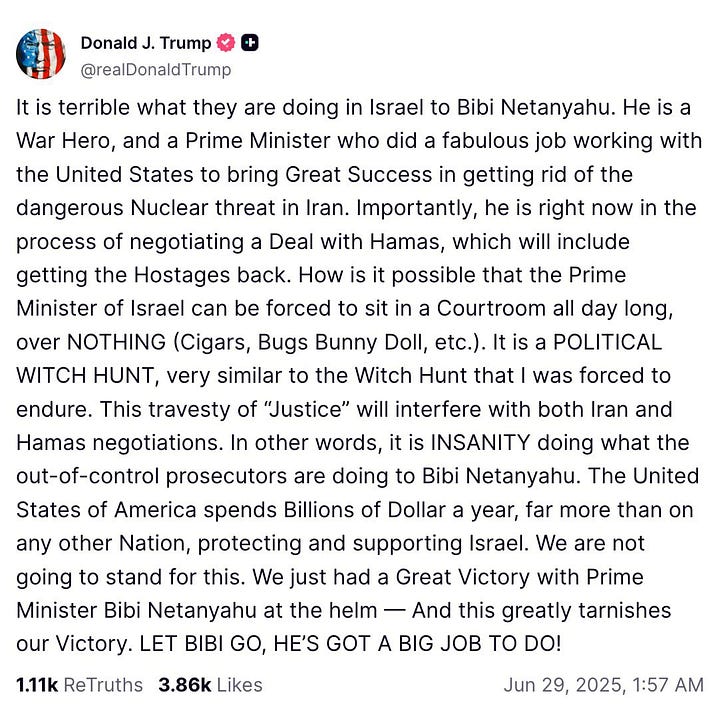
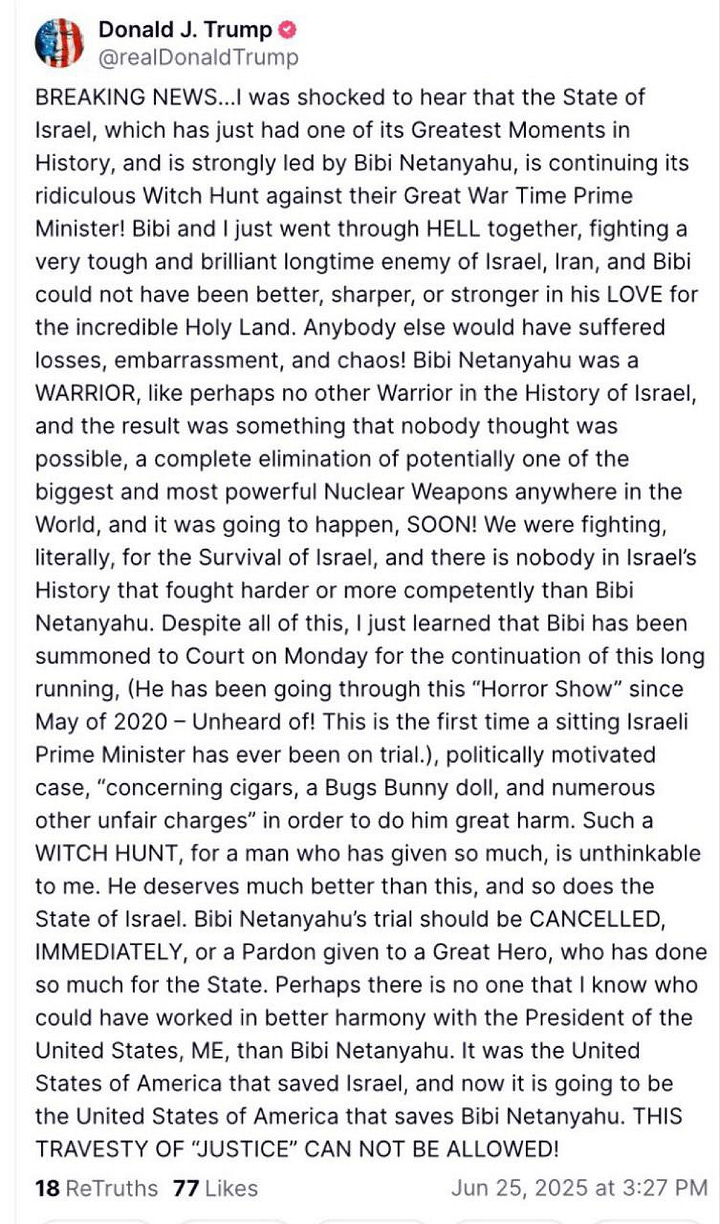
But Trump's pressure hasn't worked yet. Netanyahu—true to form—deflects, lies, and procrastinates. He clings to negotiation terms designed not to end the violence, but to prolong the genocide. His political survival still depends on permanent crisis until the goal of ethnically cleansing Gaza is achieved, and then he can focus on the West Bank, creating a fundamental contradiction with Trump's timeline.
The historical precedents driving both of them are clear. Trump wants his Obama moment—a Nobel Peace Prize won through regional dealmaking, regardless of substance. Netanyahu is haunted by what happened to Ehud Olmert—a political death sentence for ending the 2006 Lebanon War without victory, leaving Hizb-Allah intact and his career in ruins. These parallel obsessions explain why Trump pushes for any ceasefire he can brand as success, while Netanyahu demands total Palestinian elimination before considering any deal.
The standoff is playing out through careful diplomatic choreography. Netanyahu has dispatched Ron Dermer, his Strategic Affairs Minister and closest confidant, to meet with Witkoff. Netanyahu himself is scheduled to visit the White House in the coming days—most likely to conclude the direction of this high-stakes bargain. The mechanisms of leverage and obstruction are converging toward a decisive moment.
But beneath the diplomatic theater, the reality remains unchanged. Blood continues to be spilled, massacres carried out, and systematic starvation inflicted on over two million people.
A clear consensus extends beyond Washington and Tel Aviv to the palaces of Arab capitals: explicit agreements and unspoken understandings around a single goal—eliminating the resistance in Gaza, even if it means committing genocide against an entire people.
Palestinian Resistance
Missing from this entire framework is the voice of those it schemes to control.
Palestinians reject this colonial vision entirely. The renewed Abraham Accords propose installing a technocratic government in Gaza—one approved by the U.S., Israel, and their Arab partners—while excluding any faction they disapprove of. They call it stability. What they really want is to bypass Palestinian democratic will, erase political diversity, and handpick a leadership that poses no threat to Israeli dominance.
The Palestinian national fabric includes all Palestinians—no one has the right to exclude anyone. If fascists like Smotrich and Ben-Gvir can participate in Israel's democracy, why are Palestinians told who they can and can't elect? Why is every other nation allowed to decide its future—except Palestinians?
The renewed Abraham Accords may offer normalization for regimes, but for Palestinians, they offer humiliation. Palestinians will not accept a future imposed from the outside. We demand the right to choose, to resist domination, and to shape our destiny on our own terms. Palestinians have the right to be equal to other peoples of the world. And Palestinians—especially the youth of today—will not accept to be enslaved under any circumstances: not by the Occupation, not by the racist apartheid regime, and not by American dictates.

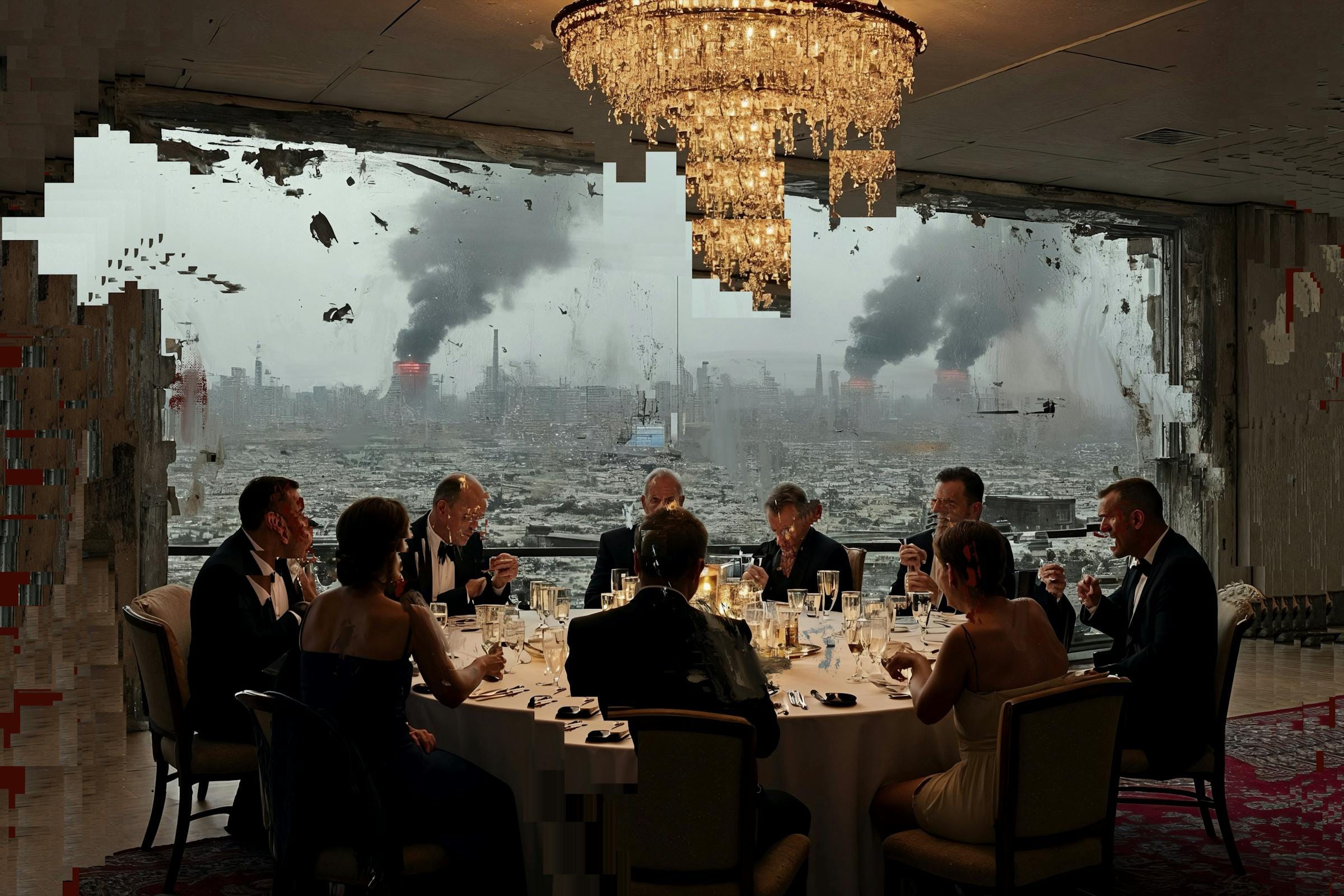

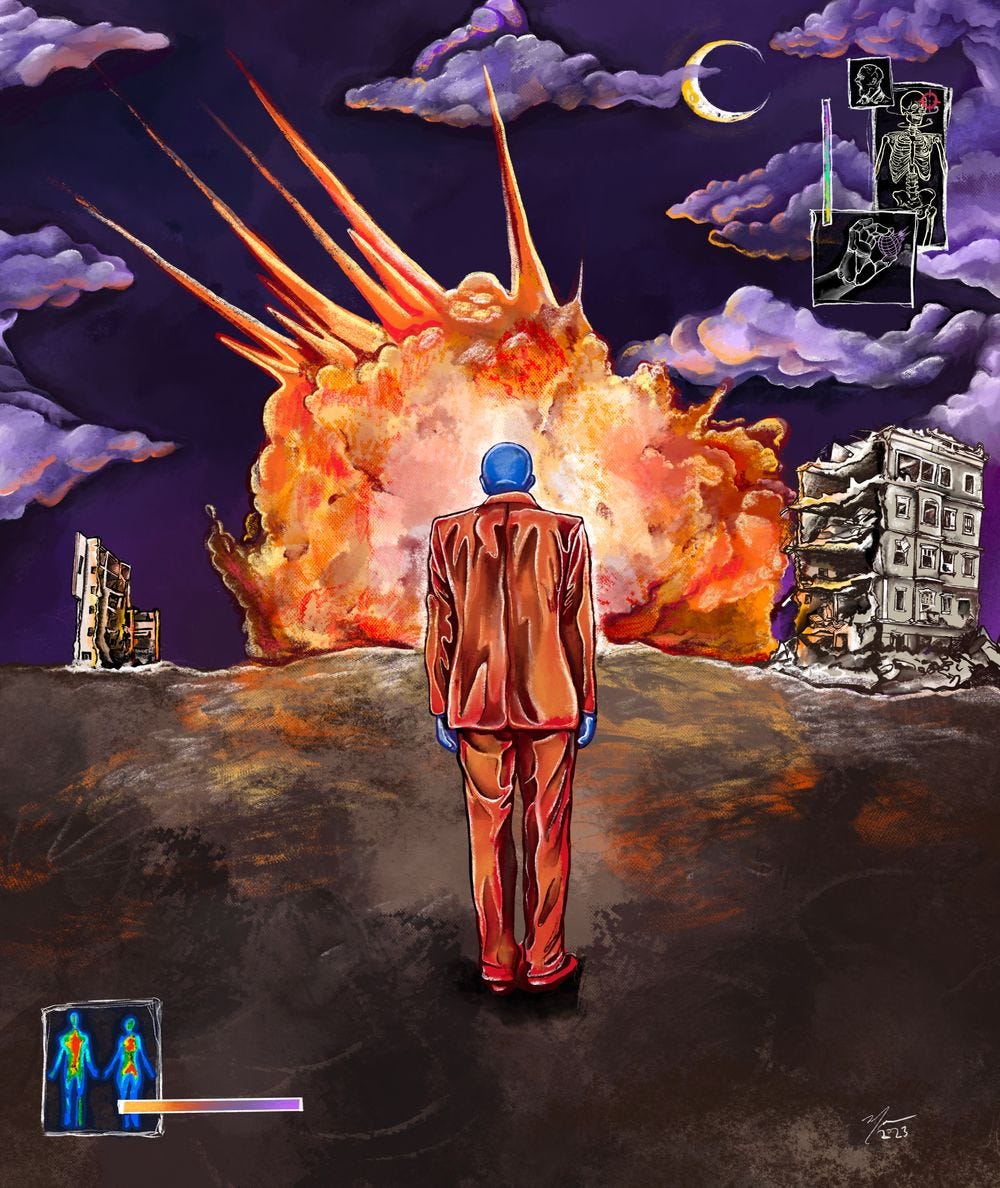

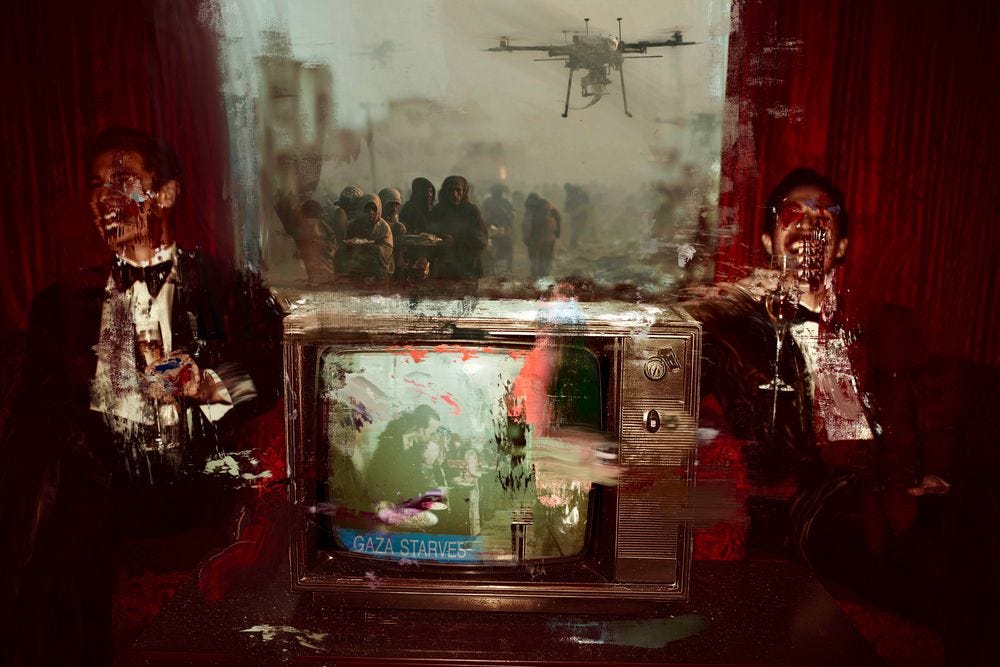
🥺🥺💔💔💔
This image reminded me of the movie “The Platform”.